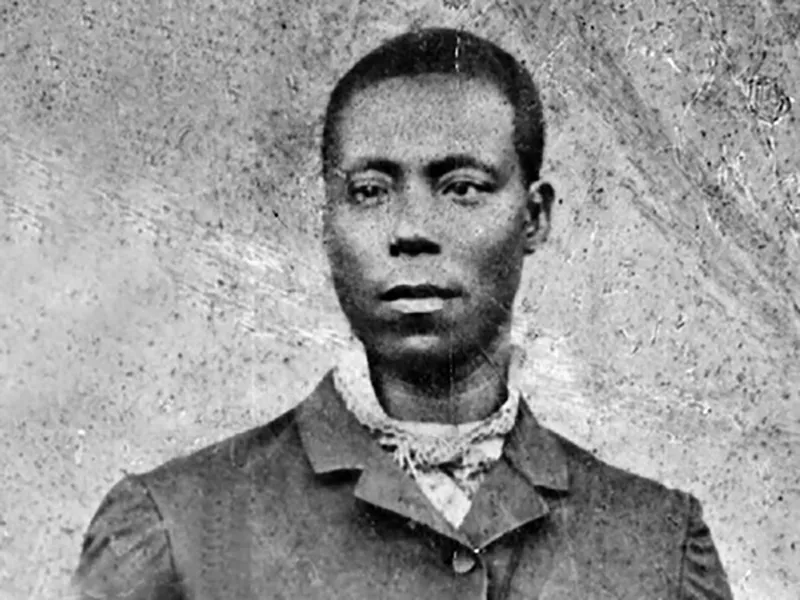what problems did masters encounter when she tried to patent her invention?
:focal(316x403:317x404)/https://tf-cmsv2-smithsonianmag-media.s3.amazonaws.com/filer/ea/e1/eae1ad66-f156-467b-85e0-ebaf5527fffc/dry_cleaning.jpg)
The side by side time you pick up your clothes at the dry cleaner, send a cheers to the memory of Thomas Jennings. Jennings invented a process called 'dry scouring,' a precursor of modern dry out cleaning. He patented the procedure in 1821, making him likely the outset blackness person in America to receive a patent.
Jennings was able to do this considering he was born free in New York City. Just for the great majority of black people in America before the Ceremonious War, patents were unobtainable, as an enslaved person's inventions legally belonged to his or her main.
According to The Inventive Spirit of African-Americans by Patricia Carter Sluby, Jennings started out as an apprentice to a prominent New York tailor. Afterward, he opened what would go a large and successful clothing shop in Lower Manhattan. He secured a patent for his "dry scouring" method of removing clay and grease from clothing in 1821, when he was 29 years old. An particular in the New York Gazette from March 13 of that year announces Jennings' success in patenting a method of "Dry Scouring Apparel, and Woolen Fabrics in general, so that they keep their original shape, and have the smoothen and appearance of new."
But we'll never know exactly what the scouring method involved. The patent is one of the then-called "Ten-patents," a grouping of 10,000 or so patents issued by the U.Due south. Patent and Trademark Office between its creation in 1790 and 1836, when a burn down began in Washington's Blodget'south Hotel, where the patents were being temporarily stored while a new facility was being built. There was a fire station side by side door to the facility, only it was winter and the firefighters' leather hoses had croaky in the common cold.
Before the fire, patents weren't numbered, just catalogued by their name and issue engagement. After the burn down, the Patent Office (equally it was called and so) began numbering patents. Any copies of the burned patents that were obtained from the inventors were given a number likewise, ending in 'Ten' to mark them as part of the destroyed batch. As of 2004, about 2,800 of the X-patents have been recovered. Jennings' is not one of them.

Sluby writes that Jennings' was so proud of his patent alphabetic character, which was signed by Secretary of State—and later president—John Quincy Adams, he hung it in a gilded frame over his bed. Much of his apparently substantial earnings from the invention went towards the fight for abolition. He would keep to found or support a number of charities and legal assist societies, as well as Liberty's Journal, the get-go black-owned paper in America, and the influential Abyssinian Baptist Church in Harlem.
All of Jennings' children were educated and became successful in their careers and prominent in the abolitionism movement. His daughter Elizabeth, a schoolteacher, rose to national attention in 1854 when she boarded a whites-just horse-drawn streetcar in New York and refused to get off, hanging on to the window frame when the conductor tried to toss her out. A letter she wrote about the incident was published in several abolitionist papers, and her begetter hired a lawyer to fight the streetcar company. The case was successful; the estimate ruled that it was unlawful to eject black people from public transportation so long as they were "sober, well behaved, and complimentary from disease." The lawyer was a young Chester A. Arthur, who would go along to become president in 1881.
Though free black Americans like Jennings were free to patent their inventions, in practice obtaining a patent was difficult and expensive. Some black inventors hid their race to avoid discrimination, even though the language of patent police force was officially color-blind. Others "used their white partners as proxies," writes Brian L. Frye, a professor at the University of Kentucky's College of Law, in his article Invention of a Slave. This makes information technology difficult to know how many African-Americans were actually involved in early on patents.
If a white person infringed on a blackness inventor's patent, it would take been difficult to fight back, says Petra Moser, a professor of economics at New York University's Stern School of Concern.
"If the legal arrangement was biased against blackness inventors, they wouldn't have been able to defend their patents," she says. The white infringer would have been believed. "Also, y'all demand uppercase to defend your patent, and black inventors by and large had less access to capital."
It's likely that some slave owners secretly patented their slaves' inventions, Frye writes. At least two slave owners applied for patents for their slaves' inventions, but were denied considering no 1 could take the patent adjuration—the enslaved inventor was not eligible to concur a patent, and the owner was non the inventor.
Despite these barriers, African-Americans, both enslaved and free, invented an enormous number of technologies, from steamboat propellers to bedsteads to cotton scrapers. Some made money without patents. Others had their earnings exploited.
To this 24-hour interval, there'southward a so-chosen "patent gap" between whites and minorities. Half equally many African-American and Hispanic college graduates hold patents compared to whites with the same level of education. There are probable a number of reasons for this, from unequal education to income inequality to bottom access to majuscule, just what's clear is that the gap is a loss for all of society.
"Invention requires a rare set of talents, permit's telephone call them inventiveness, intelligence, and resilience," Moser says. When y'all ignore the entire pool of not-white, non-male inventors, it's "hugely wasteful, to say the least."
Source: https://www.smithsonianmag.com/innovation/first-african-american-hold-patent-invented-dry-scouring-180971394/
0 Response to "what problems did masters encounter when she tried to patent her invention?"
Post a Comment